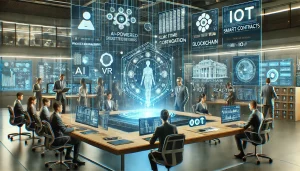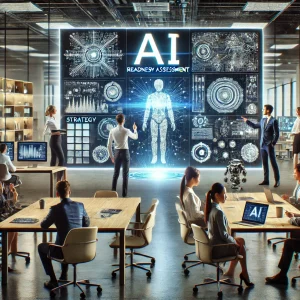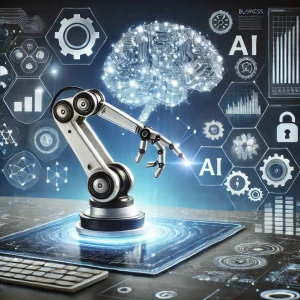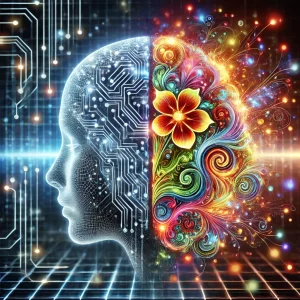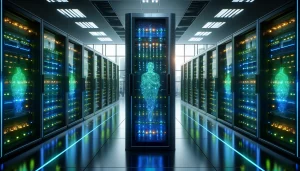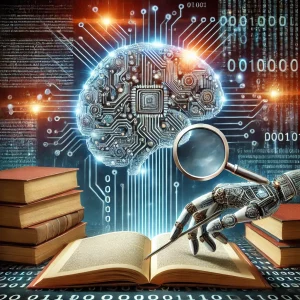
Cyberattacks used to take time.
A convincing phishing email required effort. A fake website needed a designer. Voice impersonation meant hours of editing.
Not anymore.
Thanks to generative AI and widely available tools, today’s hackers can launch highly convincing, targeted attacks at scale, and they’re getting much better by the day.
The days of poorly written scam emails and generic threats are long gone. What we’re now seeing is a new era of intelligent, adaptive, and believable cybercrime.
And all that isn’t the scary part.
It’s not just corporations being targeted. It’s you.
What’s Changed?
AI has lowered the barrier to entry for cybercriminals.
What once required technical skills can now be done with simple prompts, pre-built tools, and large language models. Hackers no longer need to be code-savvy, they just need to know what to ask AI to do.
Some of the most common and dangerous tactics include:
1. AI-Enhanced Phishing Emails
You know the old tell-tale signs of a scam email, bad grammar, odd formatting, suspicious links.
But now?
AI models can craft flawless, natural-sounding messages that mimic corporate tone, structure, and urgency. Some are even personalised using information scraped from social media or public platforms.
A Harvard Business Review article warns that AI is not only increasing the volume of phishing scams, it’s making them dramatically more believable, eroding the traditional red flags people rely on.
Examples:
- “Your HR document has been flagged for review.”
- “Unusual login activity detected. Please confirm access.”
These messages look like they came from your IT department. They’re often convincing enough to trick even experienced professionals.
2. Instantly Generated Fake Websites
Previously, creating a fake login page or payment portal took time. Now, AI can generate realistic website templates in seconds, complete with company logos, branding, and believable copy.
According to Axios, a security firm found that attackers used generative AI to spin up over 130 phishing sites mimicking Okta’s login pages in under 30 seconds, faster than most organisations can detect them.
Hackers use these sites to:
- Steal login credentials
- Collect payment details
- Harvest personal information
And with AI image tools, they can even generate realistic “employee photos” and fake testimonials to make it all look legitimate.
3. Deepfake Audio and Voice Cloning
Voice imitation isn’t science fiction anymore, it’s a real and rising threat.
With just a few seconds of audio (often taken from videos, podcasts, or voice notes), AI can clone someone’s voice and generate new speech that sounds eerily accurate.
This threat has already gone mainstream. The Wall Street Journal reported a rise in deepfake CEO scams, where criminals impersonated executives to trick employees into making large financial transfers. In one case, a UK engineering firm, Arup, lost $25 million to a realistic deepfake video of its CFO during a fraudulent video call.
Scenarios include:
- A “CEO” calling an employee requesting an urgent wire transfer
- A loved one’s voice asking for help while travelling
- A “bank representative” confirming personal details
As AP News points out, even 30 seconds of audio is enough to train a convincing voice clone.
4. AI Chatbots and Social Engineering
Hackers are deploying AI-powered chatbots on fake websites, posing as support agents or HR reps.
These bots:
- Engage victims in believable conversations
- Ask probing questions
- Capture sensitive information over time
And they learn quickly. The more people interact, the better they become at deception.
5. Highly Targeted Attacks (Spear Phishing 2.0)
With access to LinkedIn profiles, public emails, and personal posts, AI can generate customised attacks that feel personal.
You might receive an email from a “colleague” referencing a recent project. Or a text that uses your child’s name.
This hyper-targeted approach increases trust, and increases the chance you’ll click.
Even Government Sites Are Being Faked
Hackers aren’t just targeting companies and individuals, they’re now cloning government websites with alarming accuracy.
A recent TechRadar report revealed that attackers are using AI to build replicas of official government portals, tricking citizens into submitting tax details, bank info, or ID documents.
Why This Should Concern Everyone
Cybercrime is clearly no longer just a corporate risk.
It’s personal, scalable, and increasingly indistinguishable from real communication.
And the tools hackers use are getting faster, cheaper, and smarter.
Even careful individuals are falling for scams that, five years ago, wouldn’t have passed the sniff test.
As the Economist notes, we’re entering an era where AI-enabled cybercrime may outpace traditional digital defences, causing massive financial and societal damage.
So, What Can You Do?
1. Stay Sceptical, Even When It Sounds Right
Don’t trust by default. Even if a message or voice seems legitimate, double-check independently.
2. Verify URLs and Sender Addresses
Look closely at email addresses, links, and domain names. AI-generated scams often use domains that look almost right.
3. Avoid Clicking, Go Direct Instead
If you receive a message from your bank, employer, or supplier, visit their website directly rather than clicking a link.
4. Use Multi-Factor Authentication
It adds a second layer of protection even if your login details are compromised.
5. Talk About It
The more we educate each other, family, colleagues, employees, the harder it becomes for scams to succeed.
Takeaways That Matter
AI is a powerful tool, but it’s not neutral.
The same technologies that help us write, code, and communicate are being used to deceive, manipulate, and exploit.
This is more to do with awareness rather fear.
Because in a world where anyone can fake anything, critical thinking becomes your first line of defence.
The best protection you have is to stay informed, stay alert, and stay a step ahead.


